There are few things more rewarding than watching your orchard full of fruit trees and berries grow.
Keeping an orchard is a long term investment. Most fruit trees won’t even give you a hint of production in the first three years. When you consider that most have a lifespan of 20 to 30 years, it is a great long term investment.
Preliminaries
Before you get started on your backyard orchard, here are a few things that you must consider and prepare for:
- Growing and caring for fruit trees is a year-round task.
- Starting and maintaining an orchard is only as satisfying as the hard work you put into it.
- It pays to know a few experts or experienced gardeners and fruit growers – get in touch with your local nursery, their input is very helpful.
- Planning and preparation are the keys.
- Do not get flustered at this point. Planning and designing is meant to be an exciting step where you can let your creativity run free.
- An orchard is meant to be like a living thing, always changing and adjusting.
- If things go wrong, you can always fix it and learn from it. Right now, you just need to plan, plant, and get things rolling.
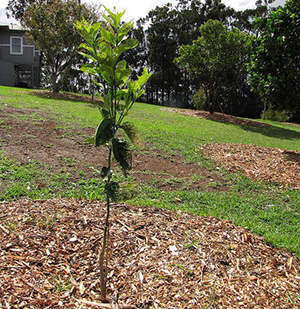 Planning Your Backyard Orchard
Planning Your Backyard Orchard
Before you start designing your orchard, there are some important things you have to take note of:
The Area’s climate
This refers to the more specific information as to how the weather and climate affect your backyard. It includes factors like the following:
- Sunlight – Where does the sun rise? Which part of the yard gets the most sunlight? What part is obscured by the shadow of your house, porch, or shed? How many hours does a certain part of the yard stay under sunlight? These factors help in choosing what trees to plant and where to position them. Naturally, you would like to put heat-loving plants where the sun is and those that are more sensitive away from the sun.
- Topography – Does your yard have a slope? Do you have small hills? These things can be used to your advantage. Some trees that require more chill hours, for example, can be planted at the foot of the slope to maximize the cool air settling there. It is also possible that such formations affect how water settles or moves in your yard when it rains. You have to take these into consideration before placing trees or planning counter-measures.
- Soil – What kind of soil do you have in your yard? Are they of the same kind? Where does the water drain? If you plan on planting straight in the ground, you might need to import soil to suit your needs. If you want to grow potted trees, you may also want to look into this before you use the soil found on your lot.
- Water – Are there natural sources of water in your yard? Does water pool in certain areas only? Can you use this to your advantage? Remember that too little or too much moisture can hurt your trees.
- Wind – Is it windy where you plan on planting? What direction does the wind come from? Can it be buffered?
- Lines of Sight – What can you see from your yard? What do you want covered or exposed?
Related: How Much Land Do You Need to Be Self-Sufficient?
Start Designing
You most likely already have several ideas in mind on how you want your backyard to look like, and you’ve already gone over pictures of backyards you’d like to use as a model. If not, it would not be a bad idea to do this first.
It is also good to get your family and friends involved. After all, you should enjoy the orchard and the fruits with others.
Here are just a few things that can be added to your backyard orchard:
- A compost pile that can serve as a green way of disposing of the things that you clean up from your yard. Regular monitoring should keep the pile stink free.
- A patio can be built into your design. So you have a place to enjoy your fresh fruits.
- A lawn is also a traditional way to go. However, be wary that lawns and trees compete for the same nutrients and can interfere with each other.
- Paths are also a good idea to get around the ground cover you plan on using. They will also help you when harvest time comes.
- A shed is also good as you will eventually realize that you will need more tools to keep your trees in shape.
- A vegetable garden is also a good addition to your yard. Proper placing of your trees and crops can make the set-up beneficial. Some vegetables will thrive under the cover of your fruit trees.
Choosing the Right Trees
It is always exciting to choose the first fruit trees to plant. There are a wide range of trees available and if you have not decided what to plant yet, here are some helpful tips:
Some Trees to Look Into:
Here are some of the common trees that can be grown in most areas; you can likely find a variety suitable for you:
#1. Peaches and Nectarines
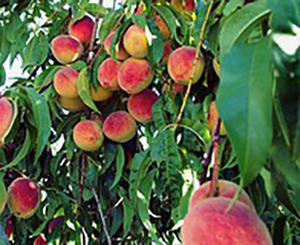
Peaches and nectarines come in a great number of varieties, and it can be tough to decide which you want. The best advice is to select the one that tastes the best to you. A standard Peach or Nectarine can reach up to 25 feet tall and just as wide. Don’t fret though, you can easily prune and train them to a manageable 10 feet. If that is still too tall for you, there are numerous dwarf varieties that you can choose from.
#2. Apples
 Everyone likes apples. For that reason, several varieties are also available to suit several climates all over the world. The only places where apples don’t grow are in the warmest tropical climates. Like all other fruits, take close note of the variety that works for your area as they need varying amounts of chill. You can also look for resistant varieties that can weather diseases and cut down on maintenance cost. You should also consider pollination. Apples are mostly self-fertile, but some varieties need cross-pollination. It is best to plant at least a pair of apples.
Everyone likes apples. For that reason, several varieties are also available to suit several climates all over the world. The only places where apples don’t grow are in the warmest tropical climates. Like all other fruits, take close note of the variety that works for your area as they need varying amounts of chill. You can also look for resistant varieties that can weather diseases and cut down on maintenance cost. You should also consider pollination. Apples are mostly self-fertile, but some varieties need cross-pollination. It is best to plant at least a pair of apples.
#3. Citrus
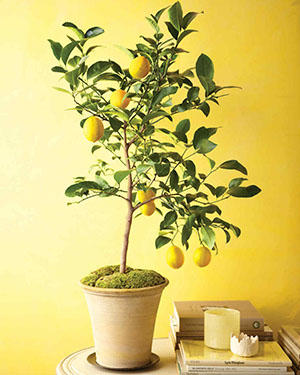 These are some of the easiest fruit trees to grow. They are mostly free of hassles and can easily be recommended for beginners and those who want low maintenance trees. Unfortunately, citrus growing is a bit limited to areas that are warmer as it has little tolerance to the winter chill. There is an option, however, to grow citrus trees in pots and move them indoors when the colder months arrive. It’s another option for your backyard if you want to grow them in containers as these trees are smaller than most other fruit trees.
These are some of the easiest fruit trees to grow. They are mostly free of hassles and can easily be recommended for beginners and those who want low maintenance trees. Unfortunately, citrus growing is a bit limited to areas that are warmer as it has little tolerance to the winter chill. There is an option, however, to grow citrus trees in pots and move them indoors when the colder months arrive. It’s another option for your backyard if you want to grow them in containers as these trees are smaller than most other fruit trees.
Related: How to Make Fruit Leather and Add It To Your Stockpiles
Caring For Your Orchard
#1. Protecting your trees from the forces of nature
If you are willing to move your trees around, provide them with lighting or frost blankets for warmth, then it will be solely up to you. Plan and prepare for these contingencies well.
#2. Fruit thinning
Thinning refers to the removal of excess fruit on your trees. It might seem counter-intuitive to a budding gardener to strip your tree of potential harvest, but this is also an important step to keeping your trees productive and healthy.
#3. Getting water to your trees
Watering your trees can be done in several ways depending on your preference and manner of preparation. Some gardeners prefer to do this by hand with a handheld sprayer or wand.
#4. Maintaining trees in summer
Summer pruning is an important part of maintaining the health of your tree. A tree puts a lot of its resources into producing more leaves so it can collect more solar energy to support more growth. When you remove some of the leaves in the midseason, thereby controlling the sunshine it gets, you can manage the size and growth of your tree.
#5. Harvesting and enjoying your fruits
When harvest time comes, celebrate! You have just nurtured a tree through the difficulties of the year. By this time, you should have a bit of fruit on your trees, and they are looking ready to eat. The big question is: when to pick your fruit. Well, this isn’t a difficult question to answer. You simply taste the fruit. Your fruit is ready when you decide it is. It largely depends on what you intend to do with the fruit after harvest. If you intend on keeping the flavor of the fruit with low sugar, you can do so.
Plan for harvest time
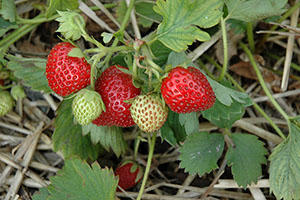 Using my orchard as an example, my June Bearing Strawberries come ripe then go out of season just as the raspberries are ripening. The raspberries and gooseberries begin coming out of their peak production just as the early plums and blueberries come ripe. About the time the last plum is picked the peach trees are ready for harvest and canning. This is all followed up by a succession of apples that takes me through September and into early October.
Using my orchard as an example, my June Bearing Strawberries come ripe then go out of season just as the raspberries are ripening. The raspberries and gooseberries begin coming out of their peak production just as the early plums and blueberries come ripe. About the time the last plum is picked the peach trees are ready for harvest and canning. This is all followed up by a succession of apples that takes me through September and into early October.
Dealing with diseases and common pests
One of the best ways to prevent disease is by making sure you buy certified plants from a reputable dealer. If you can find and afford virus indexed trees, then it is all the better. The best defense against fungus is proper pruning. While fungus and spores can live through the winter in the soil as well as bark, they travel on the wind and breed wildly in the wet shadows under a plant’s leaves. Proper pruning to allow the wind to ventilate the tree will reduce the amount of time a fungus has to set up shop.
Related: 10 Trees Every Survivalist Should Know and Why
Preventing insect pests
Every orchard tends to draw its own bugs depending on region and climate. Just like molds and fungus you need to be mindful of not planting too close to your garden. If you are growing dwarf sized trees you might be able to get by with handpicking the occasional bug you can see munching on a leaf.
Dealing with animal problems
The deeper you live in the country the more animals will be attracted to the succulent delights of the leaves and fruits of your orchard.
In my experience birds are enemy of summer while rabbits are the bane of winter. Rabbits are by far the most dangerous because if they are left unchecked they can eradicate your entire orchard in a single winter.
You may also like:
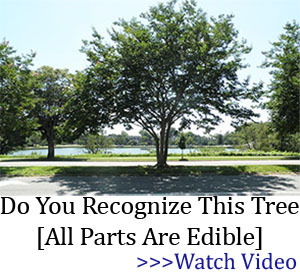 The Ultimate Survival Tree That Grows on Almost Every Street in America
The Ultimate Survival Tree That Grows on Almost Every Street in America
This Homemade Device Can Power Up Your Entire House 7 Days In A Row (Video)

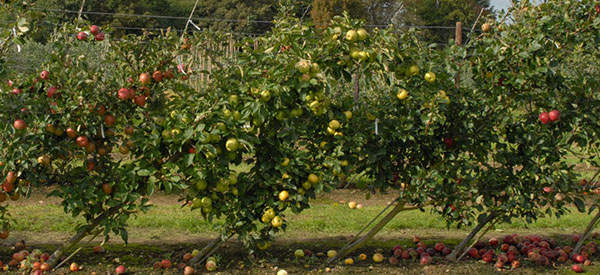




















Gophers eliminated my entire orchard of apples trees and two cherry bushes over the course of 5 years. Also took out some of my blueberries. It seems that for every one I kill, 2 more move in.
Wow ! I planted some of my trees in the golpher baskets, I worried about the but glad I did now
Get a dachshund. Two are better than one because they play tag team on chew toys. Minis are best and have a voracious appetite for rodents, stray cats, and other chew toys like stray Rottweilers. If dogs don’t thrill you, try planting castor beans. Do not have the two together! Dachshunds burrow and will bite into roots in their way. A wire basket can exclude rodents from the root ball, but with caution or it will also strangle the roots. Maybe we’re luckier than you. We have ground squirrels, but no gophers, but do have coyotes, an eagle or three, a gila monster and so on that all have ground squirrels on the menu. A lot of plants can be grown with the fruit tree that will poison anything gnawing on the roots, but you have to get the gopher population under control
My business was bothered by ground squirrels which are similar to gophers. I found that by leaving the corpses of the ground squirrels I killed in the holes it somehow drove the remaining ground squirrels from the area. They disappeared and had not returned five years later when I moved my business.
I tried to shoot the squirrels so that I could push them back into the holes they emerged from. I don’t know if the mere fact of shooting them with a pellet gun was sufficient or it was the dead bodies but it solved my problem.
I used a cheap Daisyline pump .177 caliber pellet gun with a low power scope. The shooting was easy. I used a blind and baited the holes with celery as it has a strong smell and It did attract the ground squirrels.
Hope this information helps you.
Squirrels and chipmunks love little green apples and peaches. I trap them and transport them to the other side of a river about 5 miles from the orchard. Rabbits haven’t bothered the trees but they get the same treatment: a free ride across the river into the next county. In times of need they become a protein source.
had a big problem last year with ground squirrels stealing all my fruit, had a stray cat bring over a couple kittens and no more problems !!
Put a .22 bullet in their head rather than transport them to another area to be someone else’s problem.
You aren’t doing them a favor. You are dumping them in another rabbit’s territory. They will be attacked viciously.
Oh well. Survival of the fittest. Not my problem after I set them free
In s vast forest. You are free to worry about them if it makes you feel better.
Get a old lawn mower that runs. Take off the blade.attach a 1 inch steel flex hose to the exhaust discharge. Fill the tank. Put the hose in the hole. Start it and let it run out of gas. Carbon monoxide is heavier than air. They will not go back in that hole fr a long time.
Home Depot has solar based (as opposed to battery) sonic sound tools (sorry I don’t know what they are called) that you pound into the ground. As I garden in California where we are dry from say May to November the water from my little orchard is a magnet for gophers. This actually seems to work.
I had to make cages to go around the trunks of my small Japanese plums as rabbits ate the bark thus girdling the trees and killing them. I give them a free ride to a conservation area about a mile up the road. Same for opossums. They eat pineapples.
I have a grafted pecan tree that bears heavily every year. And every year the crows take all the nuts a couple weeks before the husks split. They have a crow picnic ground not far from the tree where they all sit around and shell my pecans and swap stories. They eat all the mudbugs in the spring, too. Man, these crows are living the good life…
@IvyMike: Crows do the same to my cherry tree: I see that in a day or maybe two the cherries will be ready, but the next day they are all gone.
I plant dwarf and semi dwarf trees, Pistachio, Hazelnut and Almond by nature tend to be small. For birds I can use a netting that works quite well, however I have no solution for a walnut or pecan tree as these can grow quite tall. You can shot crows, large easily spotted…however smaller birds? And yes you can eat crow!
I would caution shooting crows. They are now classified as upland game birds by the federal government and require a hunting license and an upland game bird stamp. You are required to use a shotgun on them, no more potting them with a .22 as I used to do as a kid. A .17 HMR would be the perfect round for reaching out and touching distant crows but alas, some greenie managed to convince the numb nuts on the federal level that crows were a valuable species.
Yeah, my reaction was “you gotta be kidding” too.
Our apple trees, blueberry bushes, and other plants are getting eaten up by Japanese beetles. We’ve put down milky spores but we won’t see any results from that until next year – hopefully. Because of the beetles, the trees are behind in their growth. Even though they were at least a year old when we got them and this is their third summer in the ground, they’re not even six feet tall yet. It’ll probably be another three years or so before we may see any fruit on them. We spray with Neem oil but with all the rain we’ve had lately, it just gets washed off. Anyone have any other suggestions?
Seven insecticide.
Seven will kill ALL the beneficial insects, too. Not too bright……….
Don’t try to kill the beetles, kill the grubs in the ground. You can contact your county Ag service for proper timing, or find a good local organic gardening site to help you do it naturally. My last Japanese Beetle problem was solved by a big ol armadillo that moved into a flower bed and spent the winter plowing my lawn from one end to the other eating grubs.
For the gentleman with the Japanese Beetle problem I have 2 suggestions. First diatomaceous earth, I hope that’s correct, I am dictating this. Applying it over the plant will cause Beatles to eat this as well as the leaves etc. if they are crawling up your plants, put petroleum jelly on the stocks…it makes for a sloppy climb. Used this for Erwicks. Good luck!
If your yard is not all that sunny, plant anyway. You will get less fruits but you probably don’t need a lot, unless you plan to sell them. I use dwarf trees. My yard is 1/3 of an acre and I grow more than a dozen types of fruits, plus I have the sunnier area for vegetables. It is now a productive food forest, in the middle of a town of lawns. Plus, I have a lot of native plants to attract the bees, birds, Great black wasps (they very rarely sting, unlike the regular ones) and other pollinators native to my area. My problem is excessive fruits, which I leave to the birds and other small creatures. Squirrels welcomed here. (I do have to go check the hazelnuts to make sure I get some.)
My yard can be sunny in spots, and I have planted in all of them. lol. I live on 0.12 acres and have a mostly edible landscape of fruit throughout the year: Hardy kiwi, raspberries, figs, grapes, currants, blueberries, filberts, almonds, apples, jujubes, persimmon, apple, strawberries, nectarines, and plums. Space is not the issue… beating my kids to them is the issue… and I like to pick them ripe….
We can grow kumquats, but they can handle freezing down to about 15*. Apples? Maybe, but it’s pretty warm here for them. Olives, yep, and peaches et al, but we also get very nasty winds that knock the fruit off the trees. Hail that chops holes in vinal siding and pitted wood siding. Over 100* week after week. This is the San Pedro River area, stuck between two very high, steep mountain ranges. Wind-tunnel effect. Mountain guavas do very well as do other things. Best fruit is local native or landrace that tolerates adverse desert conditions.
We also have heavy layers of caliche, which roots will not grow through. Caliche is calcium carbonate with sodium nitrate. When it dries, it sets up like concrete, and is used in many desert nations as hard top on roads.
Capuli cherries should do well here, if I can find a nursery that carries them. I know peaches are great here, at least Canyon peaches. Night blooming cereus is the Arizona version of pitaya, AKA dragon pearls. Yucca fruit and century plant fruit (cooks, a sweet, raw, can make you very sick). Saguaro apples and tuna (prickly pear fruit). Anything that likes it dry and hot and too much lime.
Best place to buy seeds is Native Seed Search, down in Tucson. Most that they have is very desert oriented, meaning it should thrive in the heat and produce at a very young age. Next year, Punta Banda tomatoes, which are from Baja, where they are a perennial, right through months of wind and no rain, still producing. I like Chimoya peppers, which are bearing some fruit even with every day over 100*.
Why waste my time “How To Plant Your Orchard To Have Fruits All Year Round” I see nothing about the title within the article, Please make the title and the content agree
My immediate thought upon reading the title was growing fruit trees in a greenhouse takes a lot of room.
For folks living in the frost belt region there is no way to grow fruit TREES and get fruit in the months of heavy freezing and sometimes deep snow without a large property and large green houses. Most brands of apple trees need to lie dormant and actually experience freezing nights to bear decent fruit. Obviously if one lives in the sunbelt, some species of citrus bear fruit that ripens all year round. The pomelo tree next door bears three crops a year but not everybody lives in the frost free sunbelt.
Most of the farms in this county and in the Salinas Valley produce three crops of garden vegetables per year but again, that is a special agricultural area free of frost and freezing temperatures year round in most years.
However, the San Joaquin Valley doesn’t generally have three crops per year due to cold winters with occasional frosts.
Question: I planted fruit trees last year and we had a rough winter and they didn’t survive so I now have a greenhouse. My question is what is an ideal temp for summer and winter for avocado,lemon, lime, orange, and banana trees?
Judy, I would suggest you call your County Farm Bureau to get the best temperature for your area.
To all who answered my request for ideas to combat Japanese beetles – Thank you very much for your ideas. They are all very helpful and we will be trying them out to see which ones will work best on these wretched little buggers. Once again, thank you all very much.
Just so you know: I have heard of only one apple variety that is self-pollinating in all my years of growing apple trees. Plan to plant at least 2 different varieties unless you have a flowering crab apple tree near your orchard. Crab apple trees will pollinate fruiting apple trees.